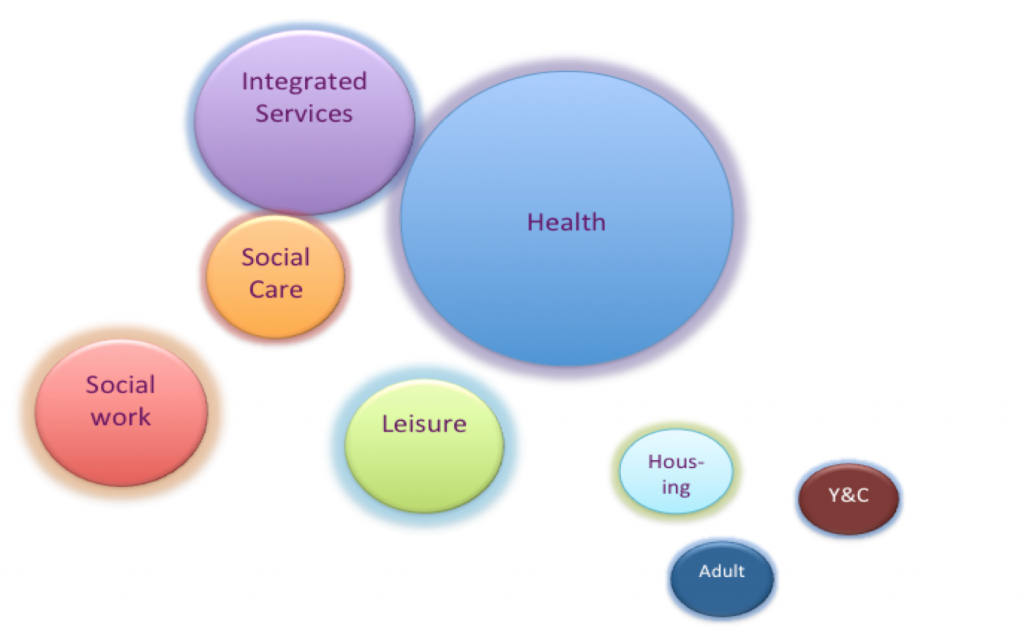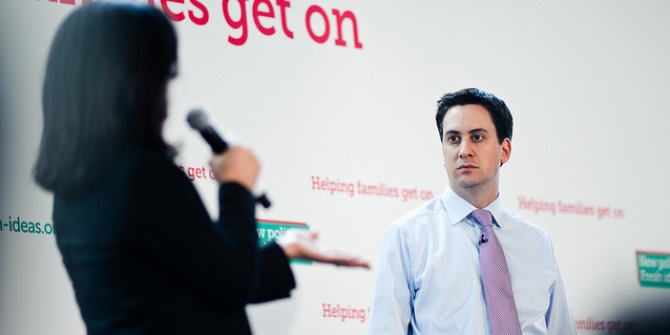
 The previous Labour and Coalition governments both promoted experimentation in mutual and social enterprise run services, a trend the current government continues. At the same time, complexity in the range of stakeholders and vehicles for public service delivery has led to calls for agencies to share a common public service ethos. John Maddocks and Jan Myers explore the combination of mutual and public to see if there is room for a blended approach, and if so who will benefit from it.
The previous Labour and Coalition governments both promoted experimentation in mutual and social enterprise run services, a trend the current government continues. At the same time, complexity in the range of stakeholders and vehicles for public service delivery has led to calls for agencies to share a common public service ethos. John Maddocks and Jan Myers explore the combination of mutual and public to see if there is room for a blended approach, and if so who will benefit from it.
Continued austerity measures and the drive for improvements in public services are fuelling increased interest in alternative delivery models. One distinct development has been the arrival of the ‘public service mutual’. These organisations sit outside of both the public and traditional mutual sectors: although they have left the public sector, they continue to deliver public services, and are ‘mutual’ because employee control plays a significant part.
The Cabinet Office’s definition of public service mutuals allows for considerable flexibility in legal form and ownership structure. It emphasises the independence of the mutual, the need to provide public benefit and the importance of some form of employee engagement. This is not the same as a more traditional description of mutuals as organisations owned by, and run primarily for the benefit of, their current and future members, who may or may not be the employees. Some will view this as diluting mutual or public service ideals, while others may welcome the application of mutual and public service values and principles to new ways of providing services. In both instances, like them or not, public service mutuals offer a different take on the idea of ‘public’ ownership.
Our initial research of public service mutuals points to an emerging array of multi-stakeholder organisations, which identify as ‘mutual’ but are working beyond traditional boundaries of definitions. Examples of public service mutuals can now be found in health, education, cultural, leisure, social care, children and young people’s services.
Fig. 1 shows the number of start up public service mutuals between 2000-2015
 Fig. 2 shows anticipated starts by sector (the size of the balloon denotes the density of new starts). Most are health related or integrated services i.e. combined health and social care (with adult services and youth & community the smallest growth areas to date).
Fig. 2 shows anticipated starts by sector (the size of the balloon denotes the density of new starts). Most are health related or integrated services i.e. combined health and social care (with adult services and youth & community the smallest growth areas to date).
Mutual benefits
Re-positioning service delivery models around mutual values and principles may raise opportunities for new ways of co-creating and co-producing services, but it also necessitates a critical look at the perceived benefits. There are, for example, arguments pointing to the resilience of mutual organisations. There is some evidence suggesting that employee-owned businesses are at least as profitable as investor-owned businesses, are at lower risk of failure, and can provide social as well as economic benefits. But much of the research to date has concentrated on mutuals operating as businesses in the private sector, rather than as public service providers.
One of the key questions to consider is whether mutuals are better at building and sustaining more collaborative relationships between key stakeholders than purely private or purely public providers. And if that looks likely then what are the identifiable and measurable benefits? There remains a lack of evidence on the relative performance and sustainability of public service mutuals. More than this, the fear of privatisation of public services ‘by the back door’ has failed to be adequately addressed.
Emerging characteristics
Our initial review of over a hundred public service mutuals listed by the Cabinet Office reveals a number of characteristics. There is clearly no one ‘right’ model and the new mutuals have adopted a variety of legal forms and approaches to organisational purpose, governance, ownership rights, and profit distribution.
One interesting feature of the mutuals established under the ‘right to provide’, available to NHS and social care staff, is the extent to which they can be described as ‘bottom up’ rather than ‘top down’ organisations. With ‘right to provide’, staff can produce an expression of interest, setting out their proposal. Among other things, this is expected to address how the proposed mutual will engage with stakeholders including staff and users.
This staff led approach is very different to that of the leisure trusts, where the initial push had, in most cases, come from the local authority and senior central management rather than service managers and staff. Indications are that the business case for leisure trusts has often rested on tax advantages, including savings on rates, rather than on greater employee involvement. It may be that the more recent employee led, multi-stakeholder mutuals actively seek gains through greater employee engagement. Early indications show evidence of performance improvements: reduced absenteeism, improvements in internal relations, efficiency, and effectiveness of systems and processes. But, as yet, most of this is anecdotal.
Mutualism and public service ethos
The types of gains mentioned above call for a re-examination of what we mean by public service ethos. A shift from compliance cultures to more collaborative and mutual environments is providing initial evidence of a renewed commitment to public goods and services. Public service mutuals may have the potential to provide stewardship of public services where individuals can sign up to and value potential for autonomy and increased stakeholder involvement in decision-making, together with organisational impact. It just might be that individual expectations, linked to public service and professional values, are finding a new home in the new wave of public service mutuals.
Wider benefits still need to be determined, so too the processes for clear lines of accountability and democratic oversight, and interdependence between differing types of public service delivery organisations and government. Benefits associated with employee-owned businesses may transfer into public service mutuals. Availability of fledgling and maturing alternative public service providers offers opportunities to assess to what extent the potential of public service mutuals can be fully realised.
___
Please note: This blog is based on the paper ‘Mutual solutions to shaping public service delivery’, published in Public Money & Management, volume 36, issue 1 (2016), pp 55-60.
 John Maddocks is Technical Manager, Governments Faculty at CIPFA, UK.
John Maddocks is Technical Manager, Governments Faculty at CIPFA, UK.
 Jan Myers is senior lecturer, leadership & organisational development with an interest in member-based organisations, public entrepreneurship and policy at Newcastle Business School, Northumbria University
Jan Myers is senior lecturer, leadership & organisational development with an interest in member-based organisations, public entrepreneurship and policy at Newcastle Business School, Northumbria University









2 Comments